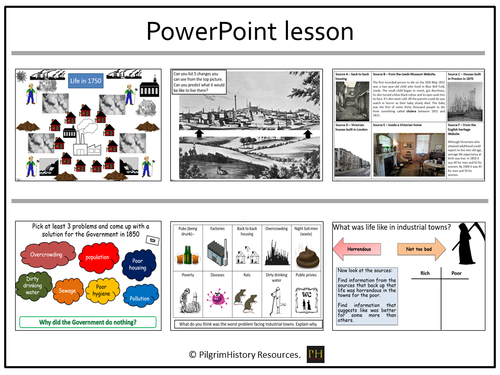


The Industrial Revolution
This lesson aims to evaluate the problems within Industrial towns and the impact they had on the growing population during the Industrial Revolution.
The lesson starts by analysing the source from Punch in 1852, 'A Court For King Cholera’, which is later annotated to help aid discussion.
Various images, video evidence and headlines allow students to build up a picture, which they then have to explain to a friend in a letter - using scaffolding and a writing frame if required.
Students also evaluate how and why the living conditions became like this and question if this was the case across the country as they are given further evidence from the wealthy in Victorian England, comparing the dwellings of the rich and poor.
Students will therefore be able by the end of the lesson be able to give an effective and balanced answer to this lesson.
The lesson is enquiry based with a key question using a lightbulb posed at the start of the lesson and revisited at the end to show the progress of learning.
The resource comes in PowerPoint format if there is a wish to adapt and change.
I have also included suggested teaching strategies to deliver the lesson and there are differentiated materials included.
Something went wrong, please try again later.
Brilliant use of available resources.
Report this resourceto let us know if it violates our terms and conditions.
Our customer service team will review your report and will be in touch.